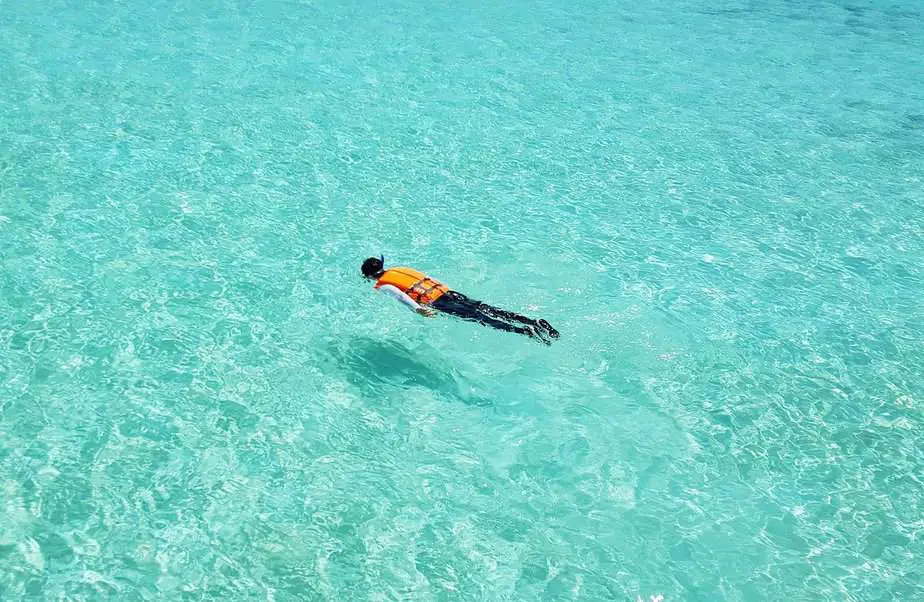The ocean can be an unforgiving place sometimes. It can also be incredibly calm and beautiful. More often than not, people who go snorkeling experience the latter rather than the former. Generally speaking, snorkeling is safe, relaxing, and incredibly fun. However, in some rare cases there are accidents that lead to loss of life.
For the most part, snorkeling is not a scary activity. Quite the opposite, it is an extremely safe, fun, and inexpensive way for someone to explore the underwater world without a scuba diving certification. However, swimming in the ocean inherently has some risks associated with it. The first time you swallow water, get thrashed around by strong currents, or have a tense encounter with marine life, it can be a scary experience. However, there are steps you can do to make snorkeling a safe and relaxed activity instead of a scary one.
In this article, we’ll discuss why you might be scared while snorkeling and how you can overcome your fears. Whatever it is you’re thinking, we can assure you that it’s likely more exaggerated than what you’ll actually experience while snorkeling. If you’ve had a bad experience before, we want you to give it another chance. With the tips in this article, hopefully you can enjoy exploring the aquatic world through a new lens.
What makes snorkeling scary for you?
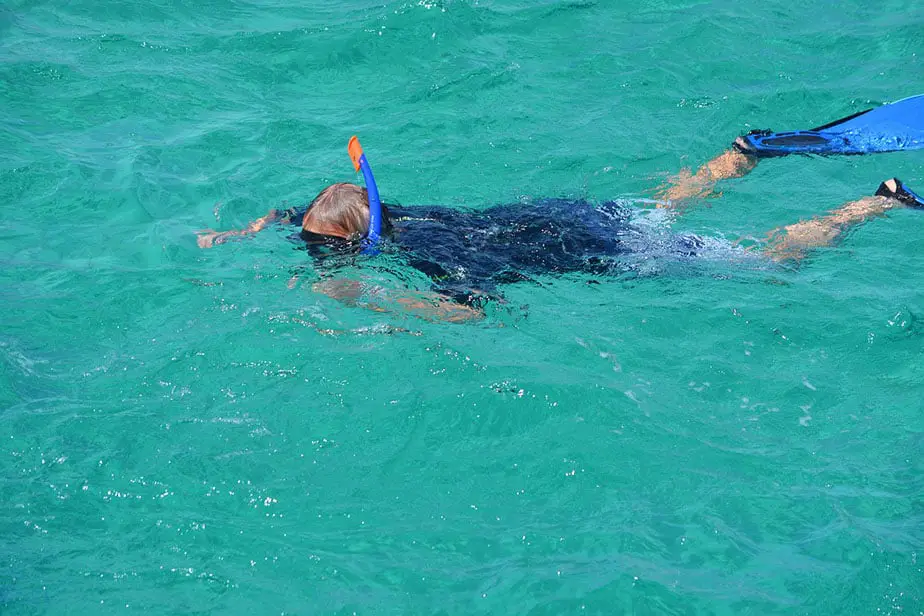
Fear, by definition, is irrational. When you fear something, you essentially have a mental block that is preventing you from doing it. What we want to accomplish is to convince you that snorkeling is nothing to be afraid of and that you are courageous enough to do it.
When someone is afraid of snorkeling, it’s rarely the act of snorkeling that is the issue. There are many reasons why someone might be scared, and the most common reasons are:
- Fear of drowning.
- Choking on water or not being able to breathe with the snorkel.
- Shark attacks.
- Rough currents and riptides.
- Water leaking into the mask.
- A general fear of the water (how deep it is, what lives in it, etc).
- A fear of cramped spaces which wearing the dive mask and being submerged can elicit.
- A fatal collision with a boat.
- Not being confident with their swimming ability.
- And so on.
No matter what your specific fear is, you can overcome it with practice, patience, and some diligence. When you have a fear, you have the power to prove it wrong and take back control of your life.
It’s not fair when you’re on a tropical vacation with family or friends and you’re the only one who can’t enter the water. It’s frustrating, you can’t help it, and it’s not your fault. Imagine how nice it’d feel to be able to join in on the fun and make lasting memories with the people you care about.
In the next few sections, we’ll be going over why you have nothing to fear with snorkeling, and some practical tips on how you can overcome your snorkeling fears.
Can I snorkel if I’m afraid of deep water?
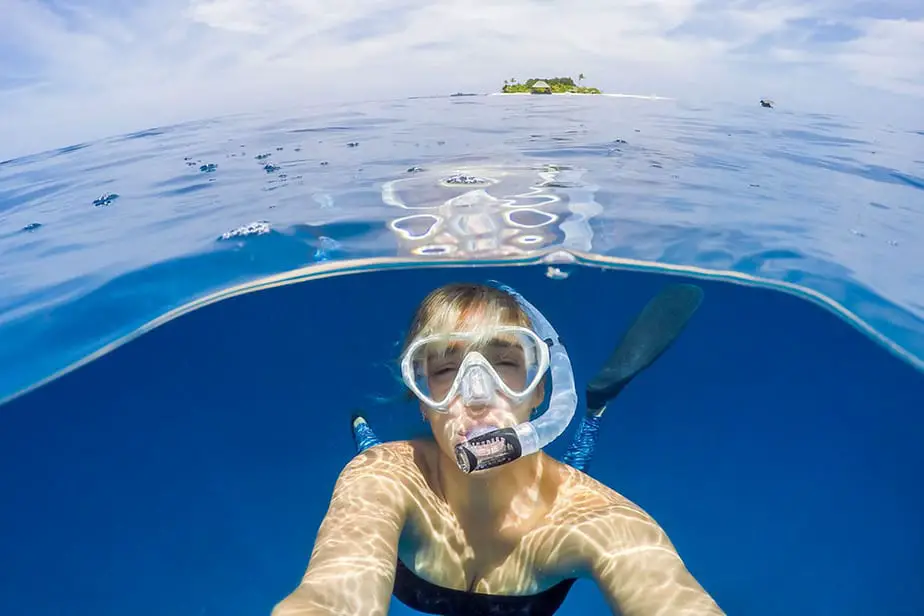
Yes, absolutely! First we need to add a caveat: If you have an extreme fear of water, you may need some psychological help that is beyond the scope of this article. If your fear is better described as anxiety or nervousness, then we can work with that.
One of the great things about snorkeling is how versatile it is. You don’t need to snorkel from a boat in deep waters to enjoy this activity. There are plenty of things to see in lagoons or close to reefs where the water is shallow, calm, and protected so you can stand up in it and don’t have to worry about strong waves.
By snorkeling in shallow waters, you can gain experience and build up your confidence using a mask and snorkel. Heck, you could even practice in a pool to start with. Let’s start with baby steps and work our way up.
We recommend entering the water from the beach so that you can walk in and gradually reach the depth you’re comfortable with. You can even kneel down in waist-deep water and submerge your face to get used to using a mask and snorkel.
With some practice in a pool or shallow water, you can build up your skill and confidence. You can then take the next step by going to slightly deeper waters, then even deeper, until finally you no longer have a fear of the water.
However, until that point comes, don’t feel pressured into jumping into the deep end. Take your time and do it when you’re ready. Stay near the exit point, wear a life jacket or snorkel vest, and snorkel with an experienced buddy if you have one.
Should I be worried about marine life when snorkeling?
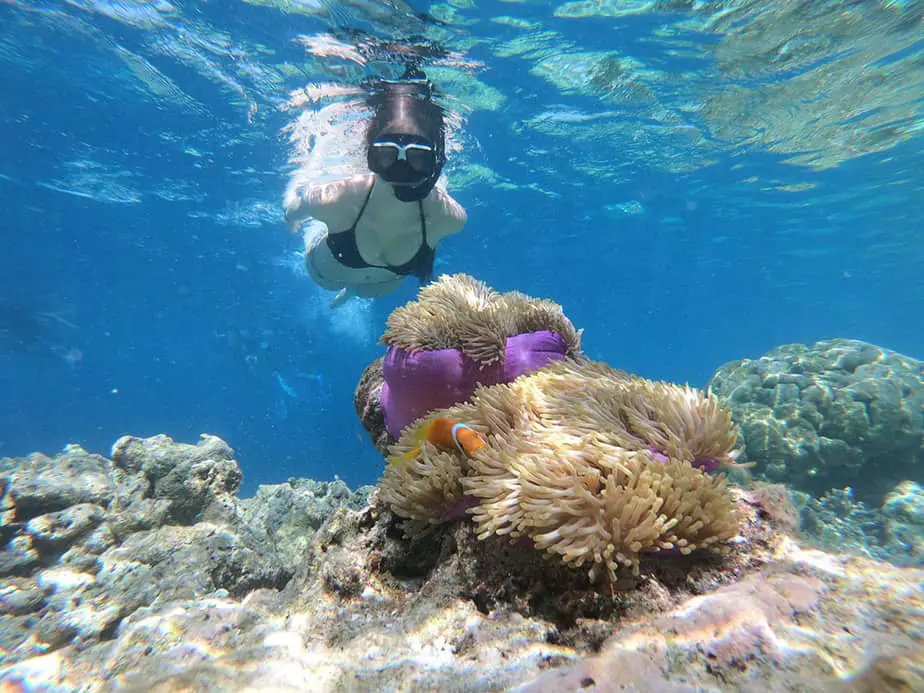
Maybe it’s not the water you’re afraid of but what lives in it. It’s a common fear that beginners have that they will encounter some vicious predator that drags them to the depths like in the movies.
However, movies and shows are designed to exploit your fear in order to elicit an emotional response from you. In reality, sea life probably has more to fear of humans than the other way around.
Sharks
Ever since Jaws came out in 1975, it put the fear of sharks into the public’s mind and spawned many knock-off shows and movies that demonized sharks as some kind of insatiable man eater. Despite how much the media loves to make sharks out to be the bad guys, the truth is you have nothing to worry about.
First of all, popular snorkeling destinations often have lifeguards and other lookouts for dangerous marine life. You won’t suddenly find yourself snorkeling into shark-infested waters. If this is a real concern for you, then check local information for safe areas to snorkel in and stay in areas with a lifeguard on duty.
Generally speaking, sharks will not swim close to the shore or go to areas where there is a lot of human activity. Even in deeper waters where sharks are more likely to appear, believe it or not, sharks actually don’t see us as food. Shark attacks are incredibly rare, with the odds of being killed by a shark in the US being 1 in 3,748,067.
You can decrease your likelihood of being attacked even further by following certain rules like not feeding them, dumping garbage into the water, or splashing around excessively. You should also snorkel close to the shore and in broad daylight.
Fish
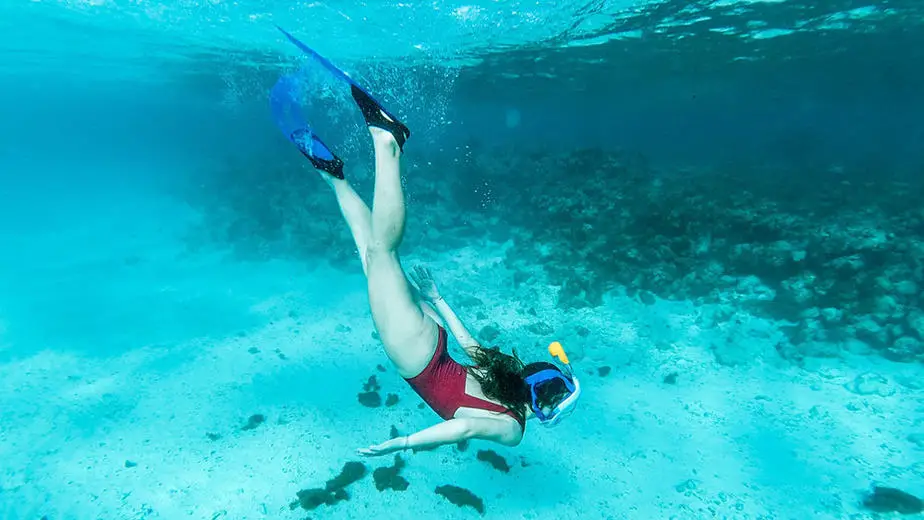
Perhaps you have a general fear of fish. For many snorkelers, seeing the fish is one of the main attractions of snorkeling. However, we can see how a large school of fish can seem like a massive and scary aquatic entity.
When snorkeling around fish, keep in mind that we are in their natural habitat. In other words, we are like intruders that have invaded their home. Now, fish are generally harmless and will leave you alone if you keep your hands to yourself.
Remember not to feed the fish either, as this can cause them to actively seek out humans, forever altering their behavior in an undesirable way.
If fish are something that gives you anxiety, then practice your snorkeling in shallow waters where there will be fewer fish. Once you spend enough time observing them, then you’ll realize that they are probably more terrified of you than you of them. You might start to see the fun in observing fish while snorkeling.
Other marine life

You might notice a trend here, but whether you’re dealing with sharks, fish, or any other marine life, they typically keep to themselves unless the actions of a snorkeler or diver provokes them into attacking. The golden rule of snorkeling is to observe from afar.
Keep your distance from corals and rocks to reduce the chances of being cut or stung accidentally. You might feel protected if you are wearing a rashie or snorkeling wetsuit, but to be honest they don’t offer that much protection from scratches or sharp edges.
Be careful where you’re standing. You might step on the coral which can hurt you but also cause irreversible damage to the coral.
Enter and exit the water through a clear path. Be especially cautious where you are stepping or kicking your fins if there are stinging, floor-dwelling marine life such as sea urchins nearby.
Due to the risk of stepping on something sharp or pointy, it’s best to wear booties if you need to do a lot of walking near or in the water.
We recommend wearing a wetsuit or rashie for some protection against jellyfish stings. Covering up your skin also protects you from sunburn.
As long as you do your due diligence by layering up, treading lightly, and getting tips from the locals about the area you are about to go snorkeling in, you can avoid most of the dangers that the marine life might cause someone who is unprepared.
Why you might be scared of snorkeling
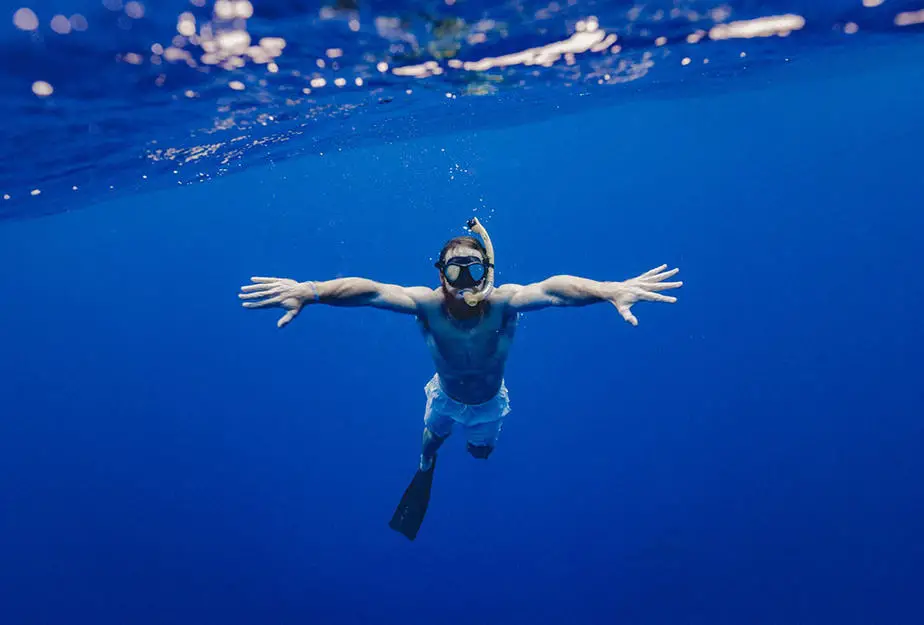
Most people who have an aversion to snorkeling will fall into one or both categories: they either believe all of the exaggerations about how dangerous the ocean is from watching too many Hollywood movies, or they are just not confident in their swimming ability and fear the worst will happen to them.
It’s okay to be nervous about something you don’t know much about. That’s why we’ve written some snorkeling tips for non-swimmers to help you get started. We have also written an article on advanced snorkeling tips for those who are past the beginner stages.
To briefly sum up our advice, you should practice in shallow water first, take your time to get used to using a mask and snorkel, and build up your confidence over time. If you aren’t comfortable with swimming, you should consider taking some swimming lessons.
Regardless of your skill level, everyone should be wearing a life jacket or snorkel vest. Using a flotation device is not a mark of shame. It helps snorkelers conserve energy so they can snorkel for as long as they like without tiring out.
If you have someone to snorkel with you, then the more the merrier. A buddy can keep an eye on you, rescue you, or call for help if anything should happen.
If you’re afraid of the water, it’s possible you had a bad experience when you were younger. Assuming that you don’t need psychological counseling for a traumatic event in your past, you’d do well to take some professional swimming lessons or snorkeling lessons.
Having a pro take you through the beginning stages can be very reassuring. You will also learn how to do things the correct way. Oftentimes people who are self-taught have many bad habits that are hard to unlearn. Once you become competent, then snorkeling becomes a lot less scary.
How to overcome your fear of snorkeling

A good way to overcome your fears is understanding that they are often irrational. If you can address a fear at its root cause and explain why it’s not logical to think that way, then you can start to convince yourself that it’s nothing to be afraid of.
You can address each issue you have with snorkeling and determine if the fear is a legitimate concern or if it is completely false. For instance, if you’re terrified of sharks, know that sharks are not the 25-feet long man-eating monsters from Jaws you might think they are. Most of them are much smaller than that and they keep to themselves.
By analyzing each fear rationally and proving them wrong, you can begin to overcome your fear of snorkeling. In the next section, we’ll discuss how you can overcome the most common fears you may have.
Practical tips to make snorkeling less scary
In this section, we will go over some simple and practical ways that you can overcome your fear for snorkeling. If it’s your first time snorkeling and you’re feeling nervous, know that this is a common response for your first time snorkeling experience and you shouldn’t feel bad about it.
We’ve already covered some of the snorkeling fears that people have, so let’s look at the remaining points one by one and see how we can help alleviate your worries.
Deep water
If floating over an abyss terrifies you, then you should not be snorkeling from a boat. Even if you have a life jacket on, you will feel absolutely terrified and not enjoy the experience at all.
We have nothing against boats. Boats are essential for accessing snorkeling locations that are far away from the shore. The very best of what snorkeling has to offer can only be accessed by a boat.
Unfortunately for new snorkelers or people who are afraid of the deep, the entire experience may be ruined for nerves and anxiety. Plus, maybe the boat ride to and from the site will cause you to feel seasick so you feel bad before you even start.
Let your first snorkeling experience be in shallow water. Snorkel right from the beach in water that you can stand up in. Then progress to water that is deeper than your height, but the seafloor is still visible. Keep inching your way out as you feel comfortable.
Don’t feel like the snorkeling you’re doing at shallow depths is any less valid than snorkeling from a boat. There are plenty of sights to see in shallow water, so you can still have a great time. As you gain more experience and confidence, you can eventually progress to snorkeling from a boat.
Equipment problems
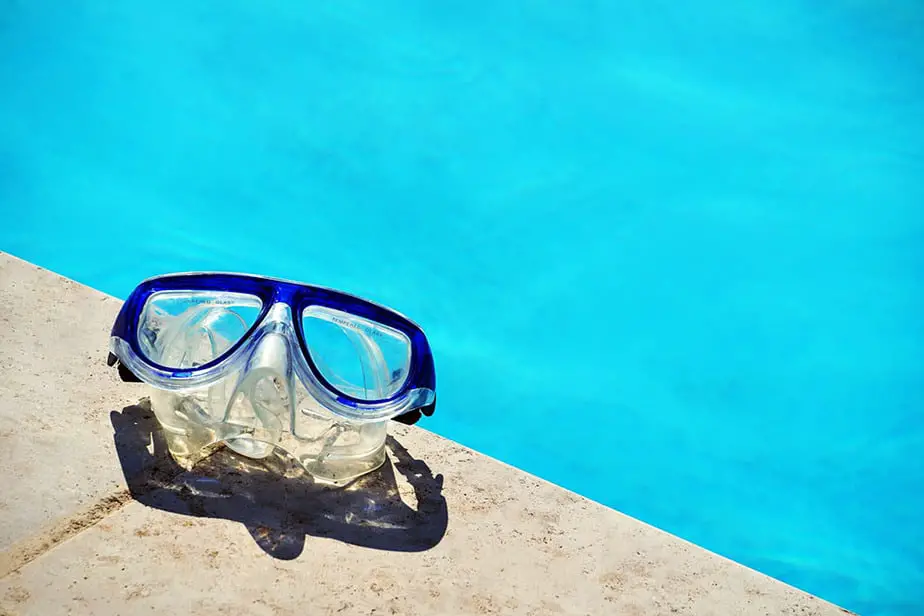
Many first time snorkelers had issues with their gear that ruined their snorkeling experience. From water entering the mask, to choking on or swallowing the water that entered the snorkel tube, to difficulty breathing, to almost drowning. There are plenty of ways your first time snorkeling experience can be disastrous.
Most of the time the issues stem from the fact that the equipment they rented was cheap, ill-fitting, and barely able to perform what was expected. That’s why it’s recommended that you purchase your own mask, snorkel, and fins.
If you’re willing to do the work up front of getting a mask, snorkel, and fins that fit you, then you never have to deal with rental gear ever again. You can ensure a consistent fit each time for a more satisfying experience.
We have already described how you can test a mask’s fit above. Common causes of mask leaks are facial hair or simply getting a mask that does not fit the snorkeler’s facial shape. Facial hair may need to be trimmed off so that the mask skirt can form a stronger seal.
In the case of a mismatch between mask design and face shape, then you need to get a different mask. For instance, if you have a small and narrow face, then you need a mask that is also small and narrow for the best fit.
If your mask fogs up really quickly, you’ll need to know how to clear your mask. A good way to prevent the mask from fogging up again is to rinse it with your saliva. This is a last resort when you’re already in the water. Ideally, you apply an anti-fog product to the mask before you head out into the water.
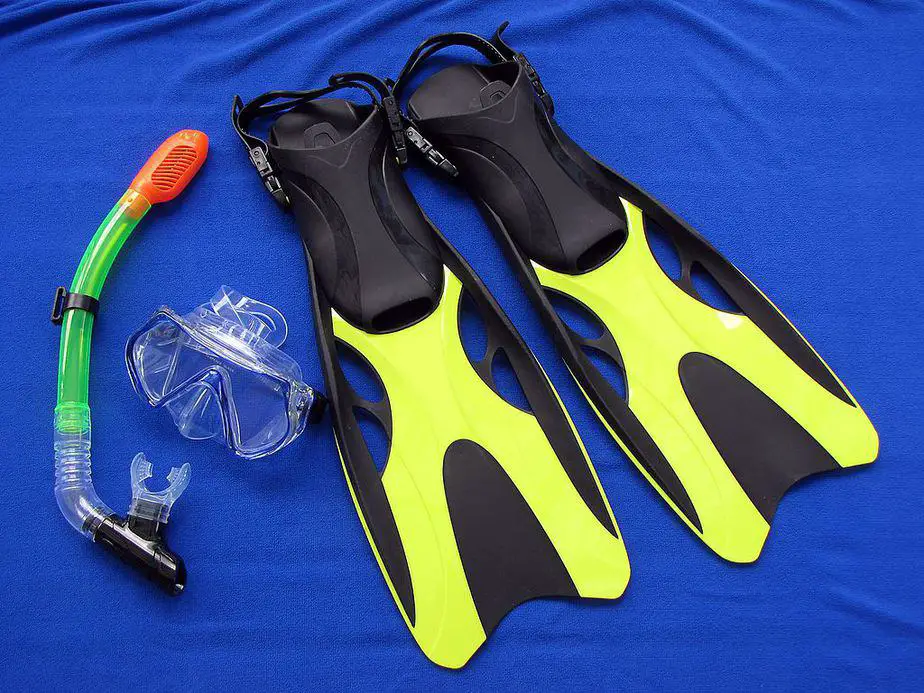
As for the snorkel, we recommend getting a dry snorkel which is designed to keep water from entering the tube, which is something that can happen a lot on windy days. Dry and semi-dry snorkels both have something called a splash guard which covers the tube opening and prevents most water from entering. Dry and semi-dry snorkels will solve most issues with accidentally swallowing water, providing peace of mind.
Dry snorkels also have something called a float valve which is a mechanism that can completely seal the tube opening, preventing water from entering, but also cutting off your air flow. The purpose of the float valve is to prevent water from entering the tube if you accidentally submerge the snorkel opening.
The downside of the float valve is that beginners can sometimes panic when the float valve seals the opening and suddenly they don’t have access to air. Furthermore, sometimes the valve can get stuck in a closed position which completely restricts air flow. For this reason, a semi-dry snorkel may actually be the best option since it doesn’t have these downsides.
Lastly, fins are necessary to help you propel yourself through the water. Using fins will allow you to conserve energy and stay afloat easier due to their natural buoyancy. When buying a pair of fins, we generally recommend ones made of a stiffer material. If a pair of fins is too soft, it barely generates any thrust and is less effective.
Once you have your mask, snorkel, and fins sorted out, you can have peace of mind on each snorkeling session knowing that your gear is reliable and fits like a glove. You had best test them out in a swimming pool first before going into the open water.
Fear of judgment
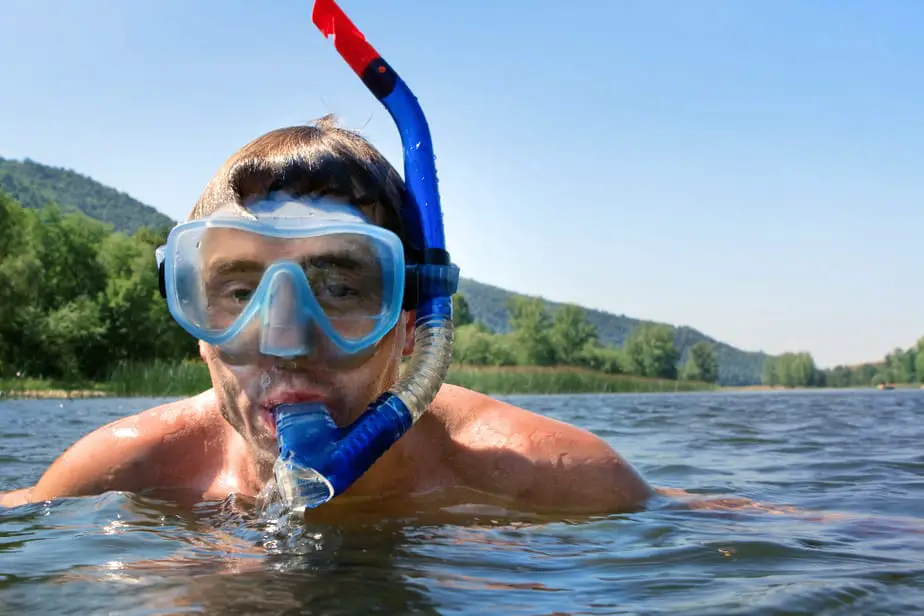
You might feel a little self-conscious about your lack of snorkeling ability. Perhaps you feel that you are too old to still be struggling with snorkeling and feel embarrassed when there are so many younger folks in the prime of their life swimming like they are part-fish.
First, understand that everybody starts somewhere. Second, in our experience, no one is judging you and in fact, most people are paying attention to themselves and trying to have the time of their life on vacation. So if you’re worried about looking silly, don’t be.
In order to enjoy snorkeling, you need to move at your own pace. Never try to do something because you feel pressured to. If you literally need to start in the pool or even a bathtub, then so be it.
Strong waves and currents
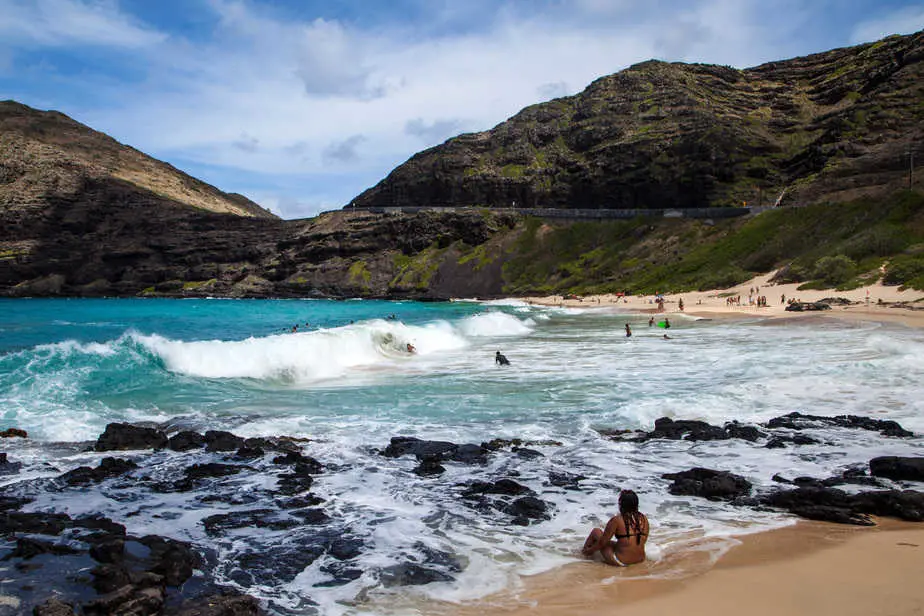
If you are afraid of rough waves and currents then you need to start in sheltered, calm waters like a pool or a lagoon. We also recommend you wear a flotation device, such as a buoyancy belt or snorkel vest, get a snorkel with a splash guard, and work on improving your swimming skills. It’s also a good idea to practice your snorkel clearing skills just in case.
This way, when the waves start getting choppy, you will be prepared to handle it. Small waves are not much of a concern if your mask is secure and your snorkel has a splash guard. The splash guard will keep most of the water out so you won’t end up choking on water. With that said, even small currents can cause you to be washed far away from the exit point if you’re not paying attention.
Another tip to keep in mind is when you’re swimming out, you should be swimming into the currents. That means that when you return, the currents will be pushing you back. If you start off by swimming with the currents, then the return trip will be much harder because you’ll be too tired to swim against the currents.
We recommend staying relatively close to your exit point so if the weather conditions make a sudden change for the worse, you can return quickly.
You might want to take some motion sickness medicine in case the undulating waves cause you to feel nauseous.
Even with the extra buoyancy that a flotation device gives you, if you plan on swimming in the open sea, you’d better be competent at swimming. Chances are, the reason why snorkeling is scary to you is because you are not confident in your swimming ability.
Taking a few swimming lessons will do wonders for your swimming ability and confidence to swim in the open water.
Straying from the group
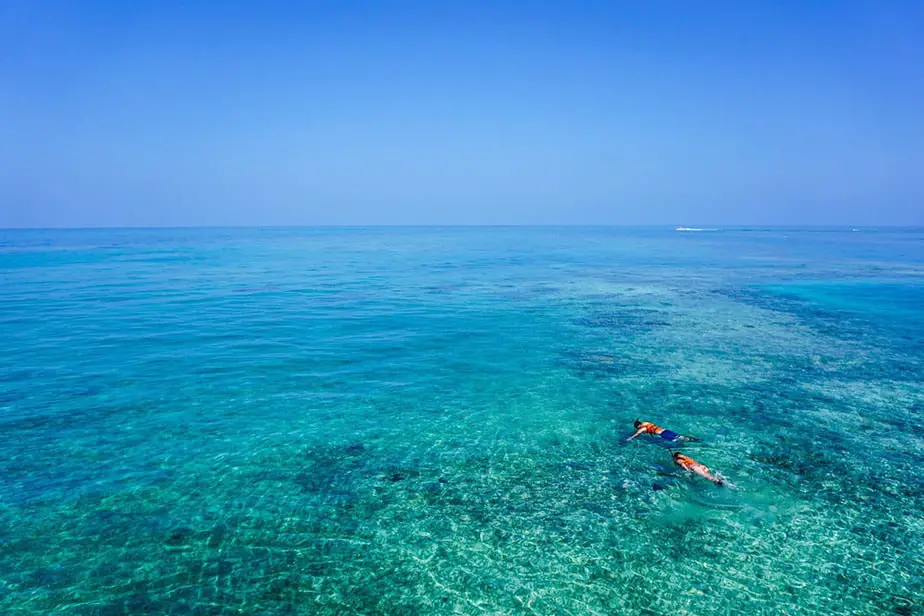
Snorkeling should at least be done in pairs. A common mistake new snorkelers make is that they get too enamored by what they are looking at that they end up swimming far away from the group and boat.
Always stay with the group or close to the boat. Wearing a bright-colored snorkel vest helps with visibility so people can easily see you and vice versa.
On a guided trip, you should not only stay with the group but behind the leader. Pay close attention to the briefing and follow all instructions given. The guide knows the area well and will show you not only the scenic route, but also the safest route. Ignore the guide’s instruction at your peril.
Before a boat snorkeling trip, asking the boat operator what the procedure is for snorkelers to get picked up before leaving the site. They should have a system that ensures no snorkeler gets left behind, and if they don’t, then you probably shouldn’t use them.
Drowning
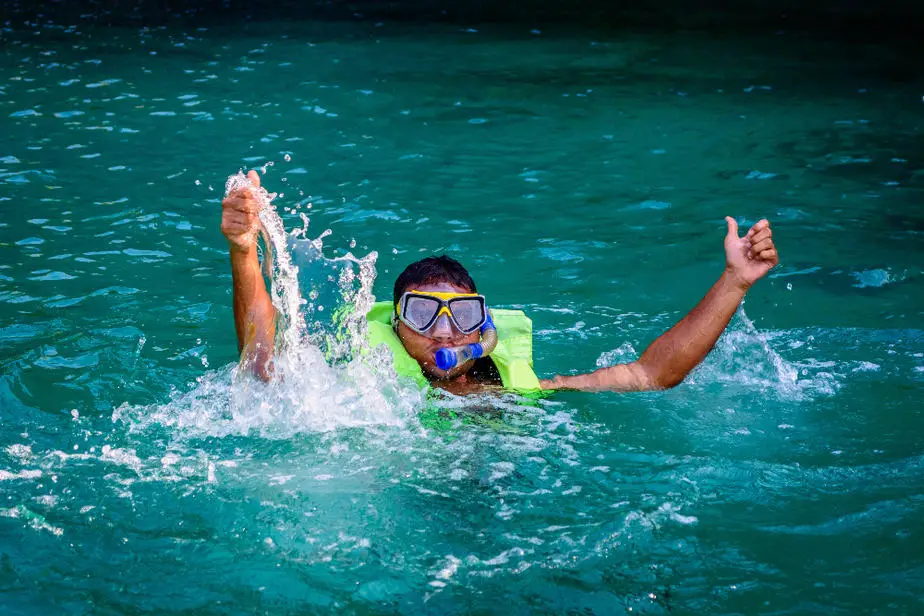
Drowning is a very legitimate concern when snorkeling. People who are wondering whether it’s safe to snorkel as a non-swimmer, let me ask you this: do you really want to put your life in the “hands” of the snorkel vest? Don’t you want to have more control over whether you live or die in an emergency? Then learn how to swim.
Even if you used to swim as a kid, you can benefit from taking professional swim lessons. It’s possible that over the years, you’ve forgotten the best practices. You may have built-up some bad habits along the way. Taking swim lessons will best prepare you to handle the waters and build up your confidence in a practical way.
When you feel ready to snorkel, you can go about this in a couple of ways. You can try to make it on your own, which is feasible enough. Snorkeling is not that hard and you could probably get a decent education just watching YouTube videos.
Another way is to consider taking some snorkeling lessons or snorkel with a tour guide. You will be taken to shallow water where some of the snorkeling basics will be taught, and then you can stick with a small group while being led to idyllic locations.
No matter which option you take, you should always wear a life jacket or snorkel vest. When inflated, a snorkel vest will keep you from sinking. In the case of a life jacket, it is designed to keep your head above water even when you’re unconscious. It might make snorkeling a bit more difficult, since you’re trying to keep your face underwater, however a life jacket is the safest option.
Never snorkel alone. We recommend snorkeling with a group or snorkeling with an experienced buddy. You can keep an eye on each other and can provide aid if needed.
Once again, stick to shallow, protected waters if you’re not ready to go to the open waters. Practice snorkeling basics like mask clearing, snorkel clearing, and how to kick your fins.
Exhaustion and panic
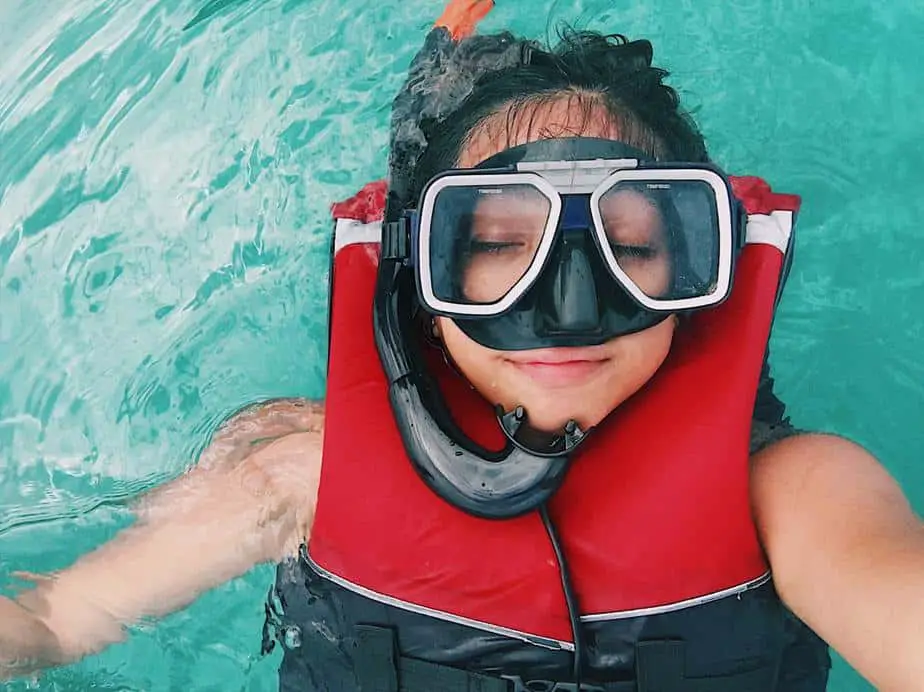
If you’re out of shape or at the mercy of a strong current, then you will undoubtedly begin to feel exhausted and panicked. Once again, we recommend wearing some kind of flotation device. Save your energy and look for a situation where you can eventually swim to shore or a boat.
When snorkeling from a boat, stick close to it. As soon as the weather turns for the worse, quickly get back onto the boat.
Another common cause of panic is when water enters the snorkel tube. Snorkelers who don’t know what to do will choke and struggle to breathe. If they flail around too much, they waste even more energy and oxygen, which only makes the situation worse.
If you find yourself choking on water, you need to stay calm and lift your head above water. Take the snorkel out of your mouth and cough as needed. Compose yourself and take deep breaths all the while. You do not want to be in a panicked state because you will make bad decisions. Once you have calmed down, you can put the snorkel back in your mouth and resume snorkeling.
As a general tip, you should be extremely comfortable with using your equipment. You need to know them front to back. What’s the best way to clear your mask or snorkel? How do you take off your mask and snorkel? How do you inflate or deflate your snorkel vest? Practicing all of these movements in shallow water will prepare you for the real thing.
When a panic attack strikes, you must focus on your breathing. Taking deep, slow breaths will help you relax and reduce your heart rate. Once you’re calmer, end the snorkeling session and identify what happened. There will always be a next time, so don’t beat yourself up over it.
Parting words
Any activity to do with swimming in the open water, whether it be scuba diving, snorkeling, or open water swimming can be nerve-wracking the first few times you do it. There’s a very real risk of drowning and the deep dark abyss of the ocean can make you feel really small.
While certain aspects of snorkeling can be scary, most of them can be overcome through practice and wearing certain equipment. Furthermore, learning how to swim by taking swim lessons tends to alleviate most people’s fears. Once someone realizes that they have control over their situation underwater, then they begin to feel more relaxed.
Soon, you’ll be snorkeling at all kinds of destinations, enjoying the aquatic vistas that the ocean has to offer, or even participating in extreme snorkeling sports. All it requires is for you to take the first few steps of acknowledging your fears and then overcoming them one by one.

